Abstract
The differences within behaviorism in general and behavior analysis in particular have been described in many ways. Some of the more common distinctions are “basic versus applied”, “clinical versus non-clinical”, “behavior therapy versus behavior analysis”, and “experimental analysis of behavior versus applied behavior analysis”. These and other such distinctions do not seem to refer to truely important differences, or refer to important differences in confusing ways. It is suggested that there are two main dimensions which divide behaviorists into meaningful units: the type of paradigm (behavior analysis versus methodological behaviorism) and the level of analysis (technical, methodological, conceptual, or philosophical). By considering these two dimensions a number of issues in the field are recast. In particular, many of the differences within behavior analysis are recast into questions of the relationship between theory and technology.
Full text
PDF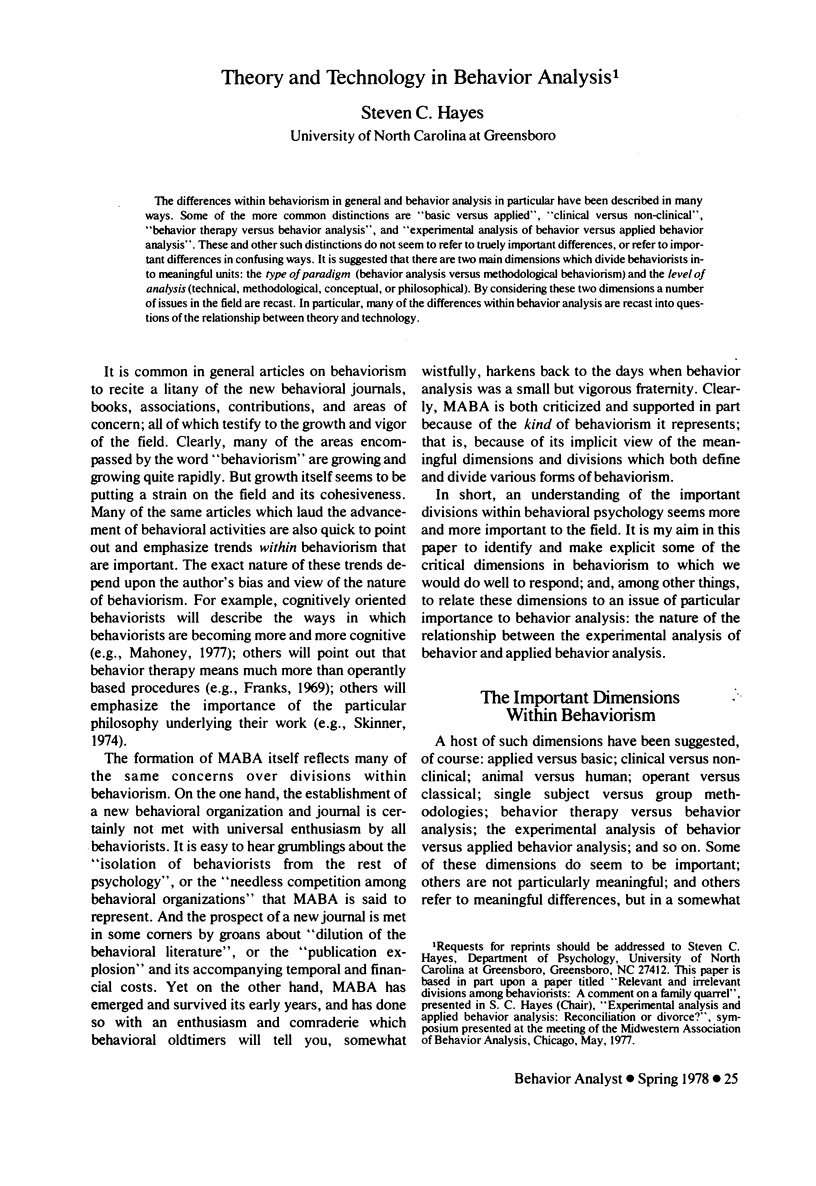
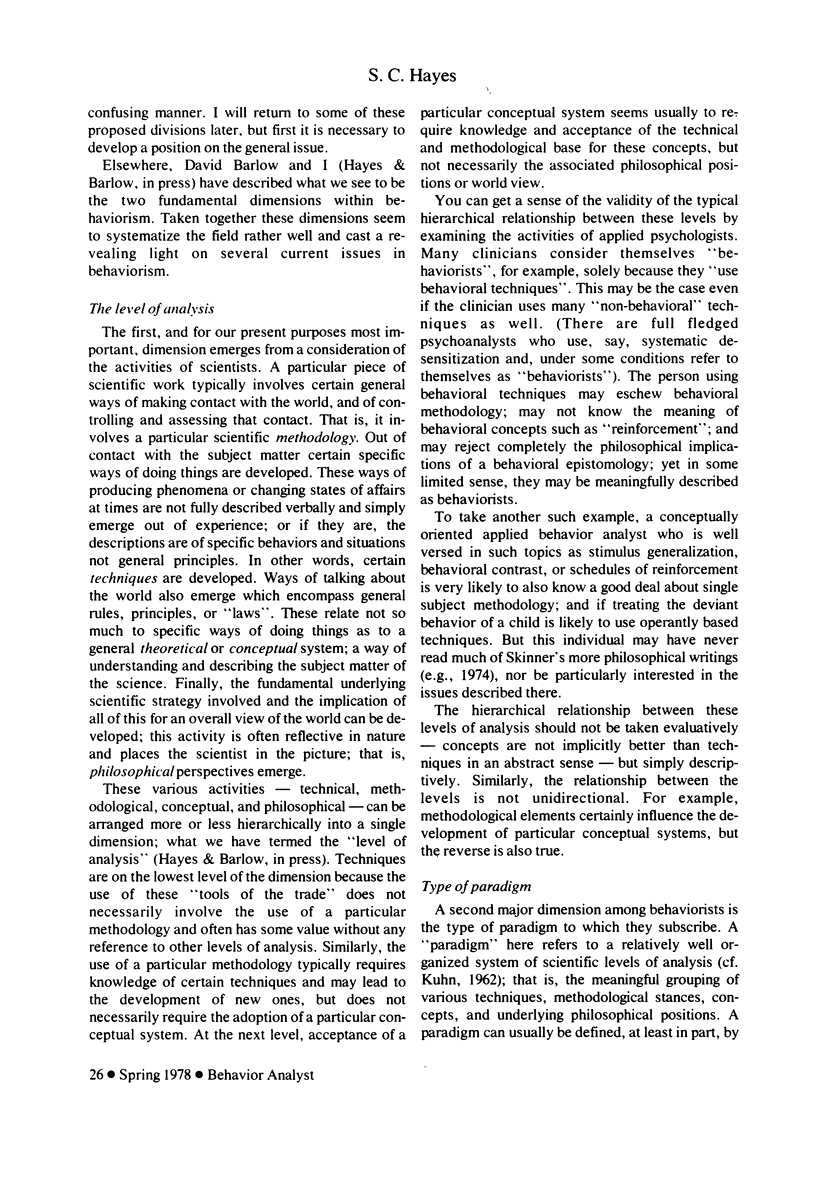
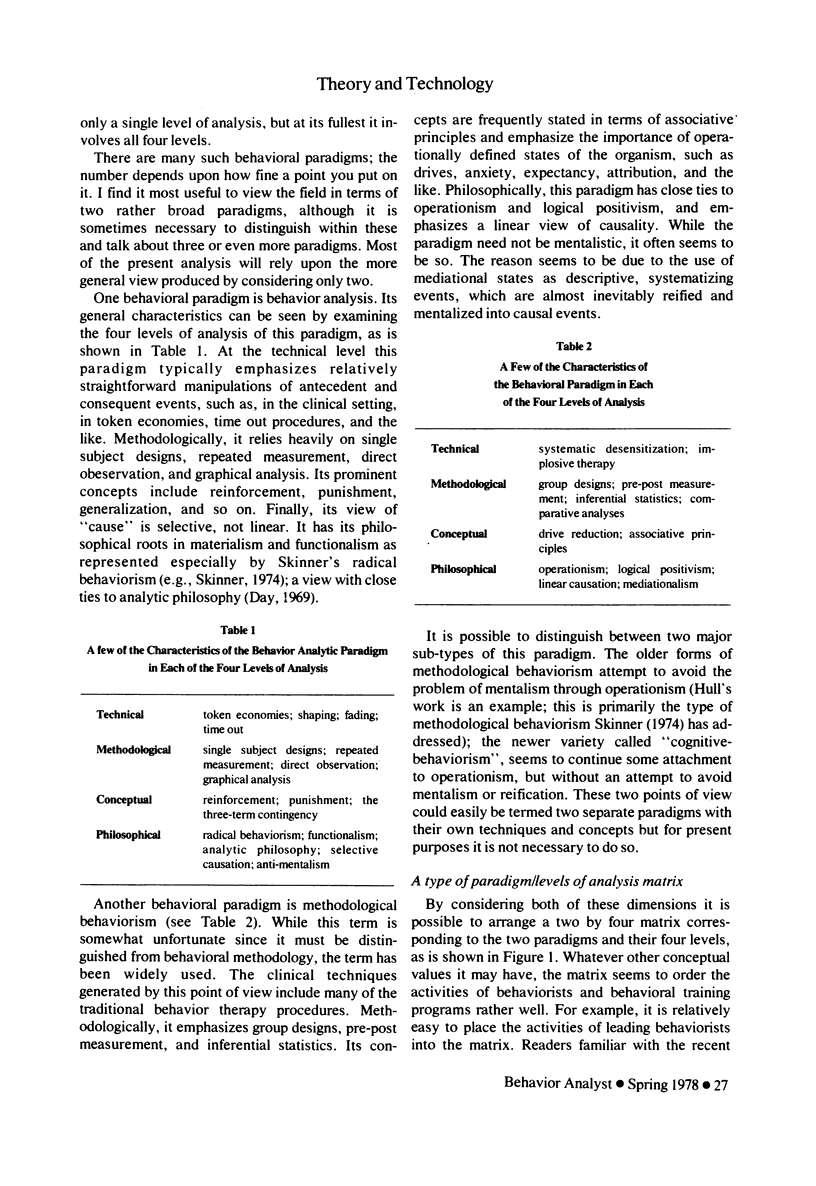
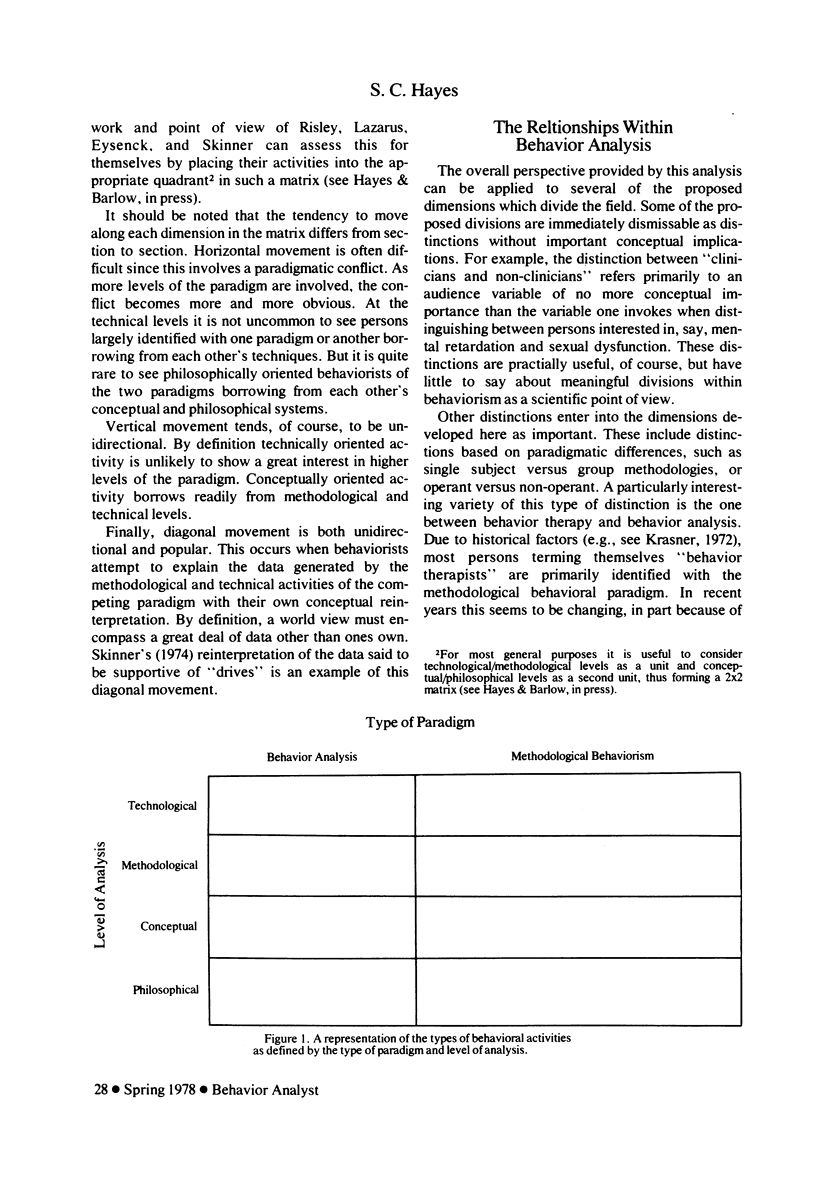
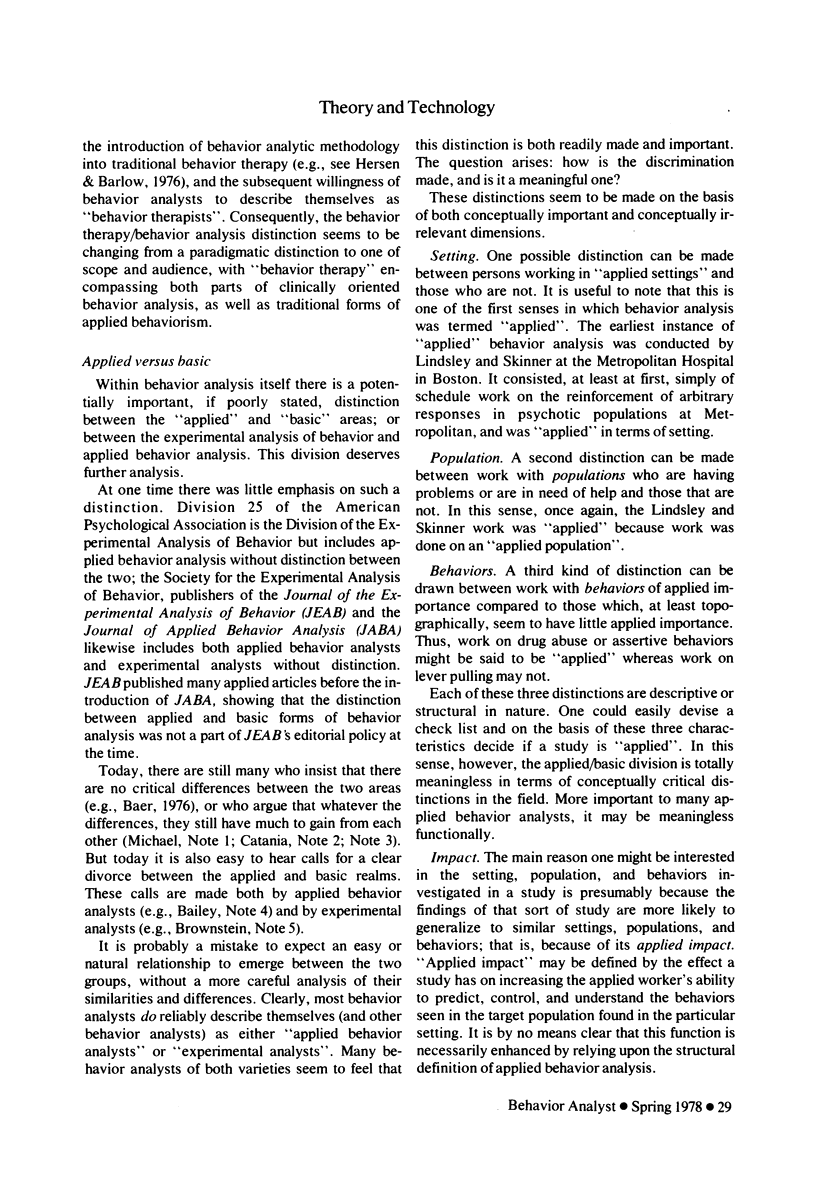
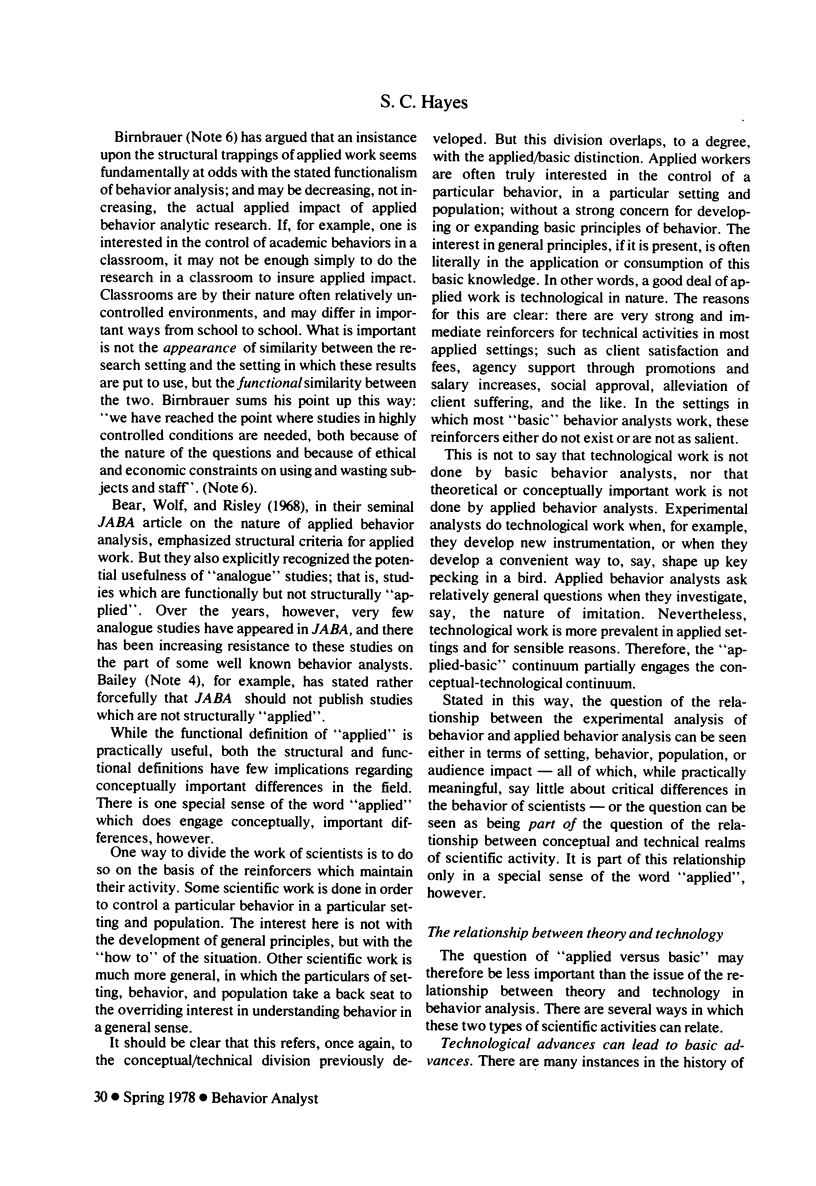
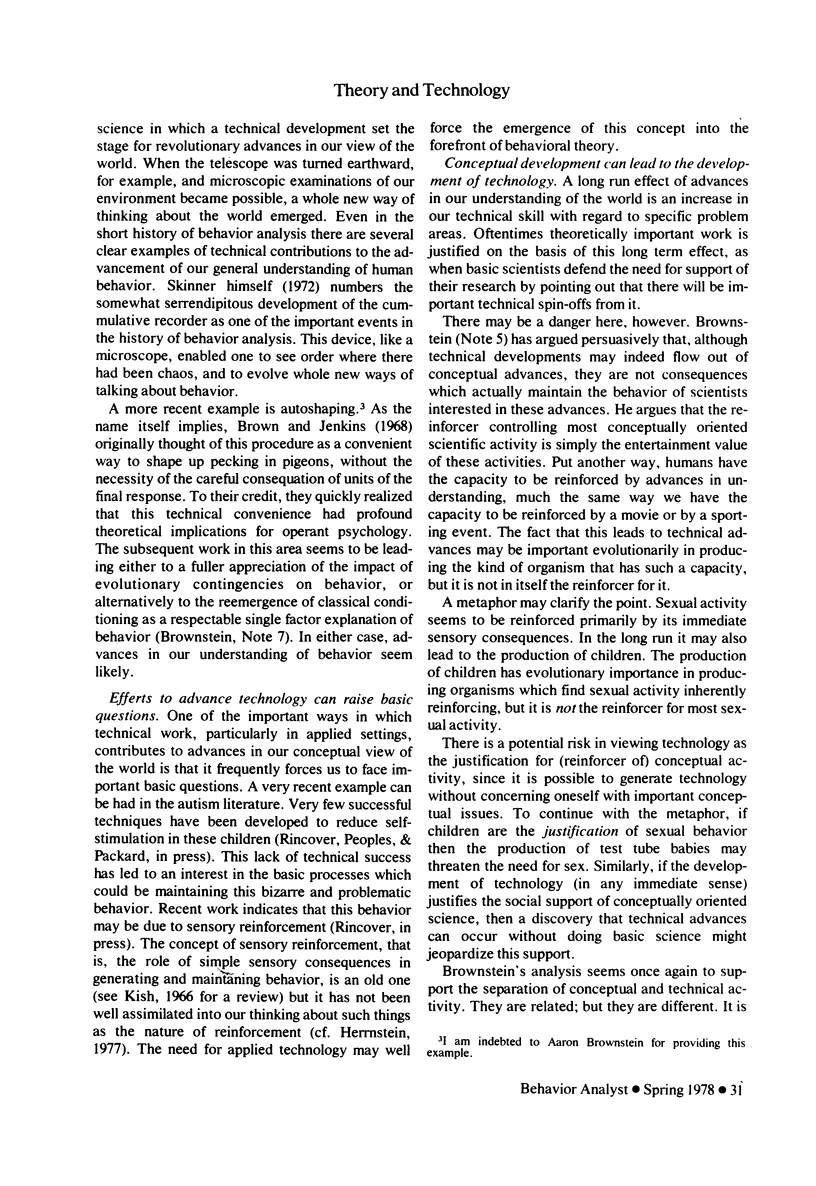
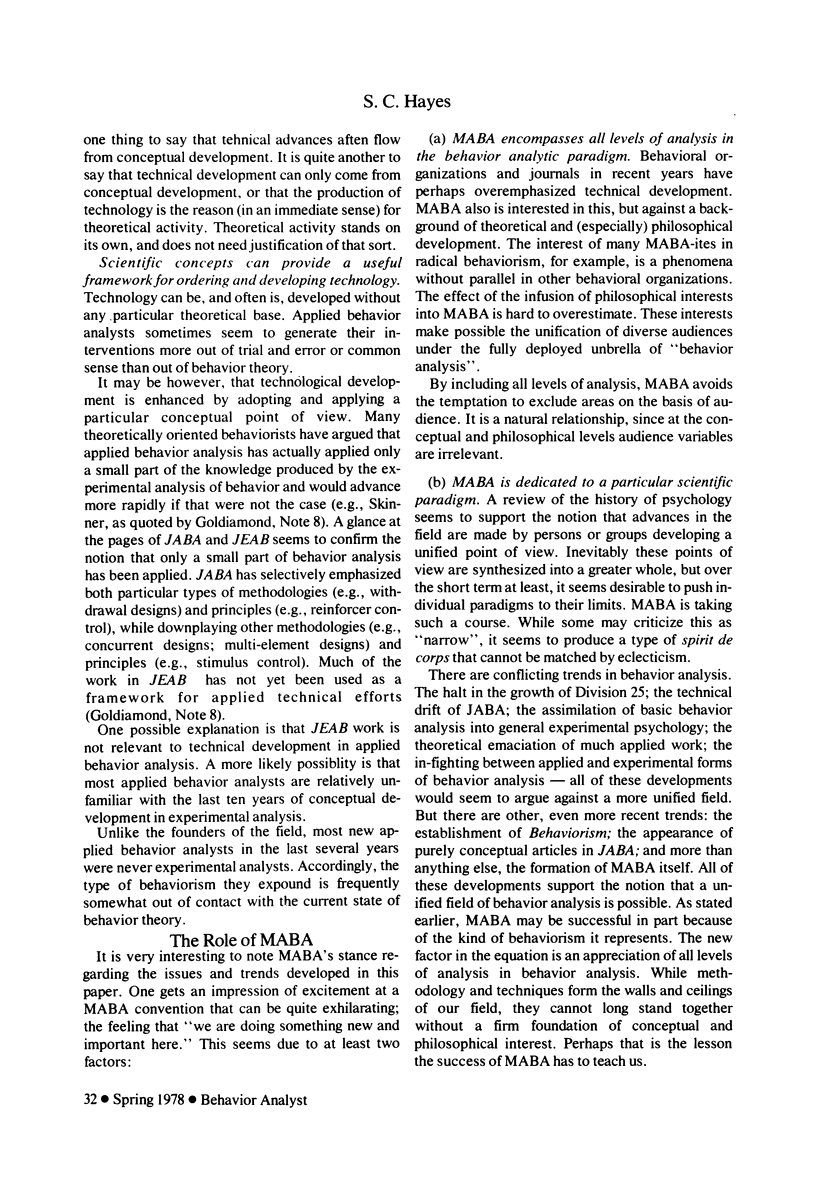

Selected References
These references are in PubMed. This may not be the complete list of references from this article.
- Mahoney M. J. Reflections on the cognitive--learning trend in psychotherapy. Am Psychol. 1977 Jan;32(1):5–13. doi: 10.1037//0003-066x.32.1.5. [DOI] [PubMed] [Google Scholar]


